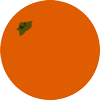spring 2020
Table of Contents
Return to Home Page
Like the best myths![]() Medusozoa
Medusozoa![]() Sarah Lyons-Lin
Sarah Lyons-Lin
Supermarket Lobsters![]() Robbie Gamble
Robbie Gamble
Tchaikovsky, Age 52, Finds His Inspiration![]() John Barton
John Barton
A Symptom of Resignation![]() The Gee Whiz Element of Tropical Storms and Symphonies
The Gee Whiz Element of Tropical Storms and Symphonies![]() Jen Karetnick
Jen Karetnick
Family Dinner![]() In Which I Re-name My Father
In Which I Re-name My Father![]() Poem Containing Only Words I Hate
Poem Containing Only Words I Hate![]() griffin epstein
griffin epstein
Stem of Old French Creistre, To Grow![]() Of Stinging Nettle
Of Stinging Nettle![]() Page Hill Starzinger
Page Hill Starzinger
blue light![]() Stephanie Yue Duhem
Stephanie Yue Duhem
sold separately Lesley Battler
Monologue of a Fly's Shadow![]() Monologue of a Cow's Shadow
Monologue of a Cow's Shadow![]() Danielle Hanson
Danielle Hanson
she is in the kitchen now![]() Nora Pace
Nora Pace
Humid Weather![]() Me of Me
Me of Me![]() Catherine Strisik
Catherine Strisik
A Twohanded Cut![]() The Tornado Cut
The Tornado Cut![]() The Pandora Cut
The Pandora Cut![]() Torben Robertson
Torben Robertson
Another Vision![]() Patricia Nelson
Patricia Nelson
Moon Turned Her Half Face From Me![]() Lawrence Feuchtwanger
Lawrence Feuchtwanger
There Is No Substitute for Good Planning![]() Erin Kirsh
Erin Kirsh
How Do I Love Thee? Let Me Count the Nachos![]() Jessica Covil
Jessica Covil
Six Gray Moons on a Screen![]() Eleanor Kedney
Eleanor Kedney
Breathturning Chris Checkwitch
Communion of Tongues![]() Hege A. Jakobsen Lepri
Hege A. Jakobsen Lepri
Like the best myths
this one has two tellings.
For Sophocles: A looped rope closes in, scavenging. Pressure snakes under the jaw. Shining moon of Jupiter, uterine beast—her body mutilated by its own hands. Scratches flowering the neck. Eyes still open heaven-wide, her head snap-stem crooked. Hung, her shape is a woman, then a mother, then a witch.
For Euripides: The woman turns to magic, transforms her guilt into an array of bright fabric. Endures. Renames herself blame. Endures that defiling love, that husband-child, and follows him still—into isolation, into the wild, into bondage and a hollowed version of herself.
Both are the story of men.
